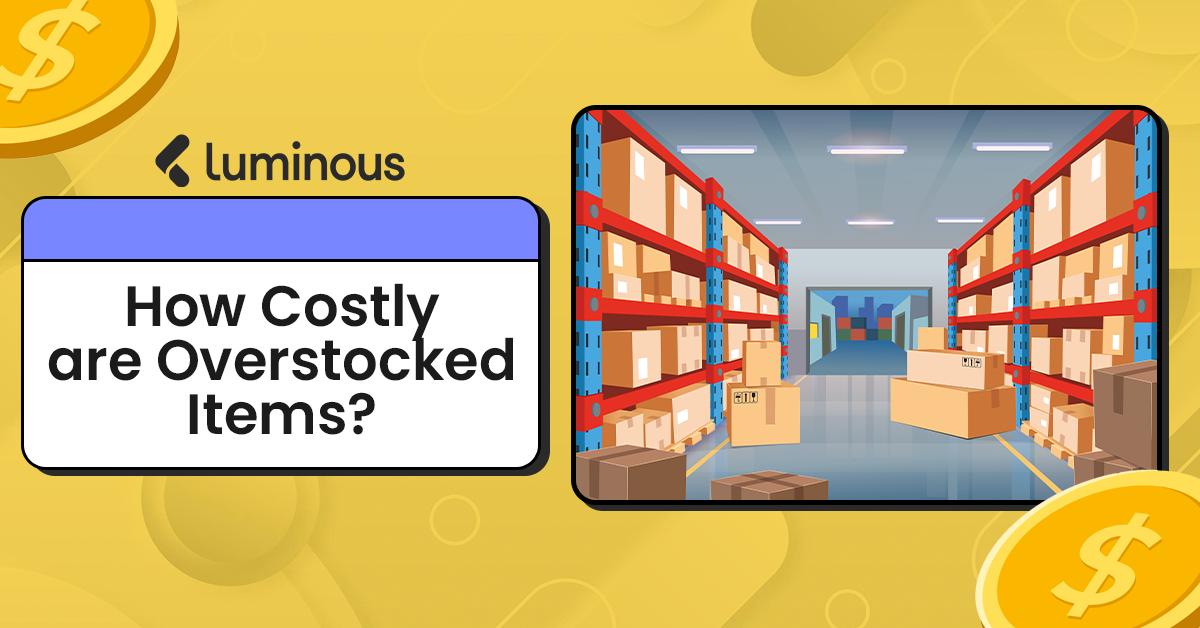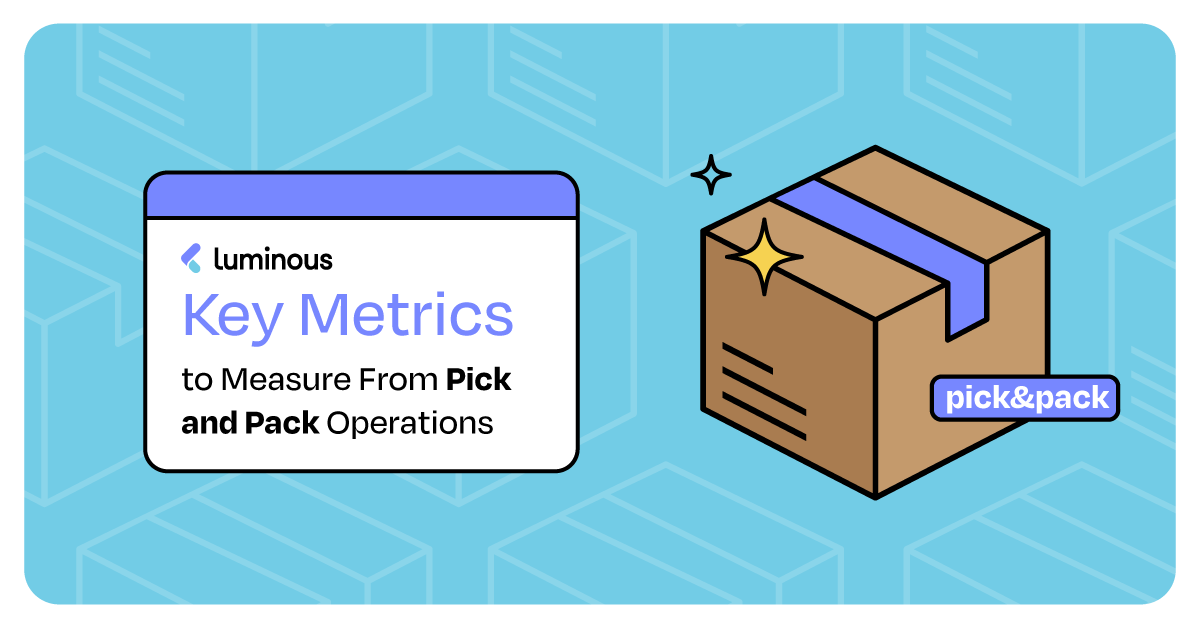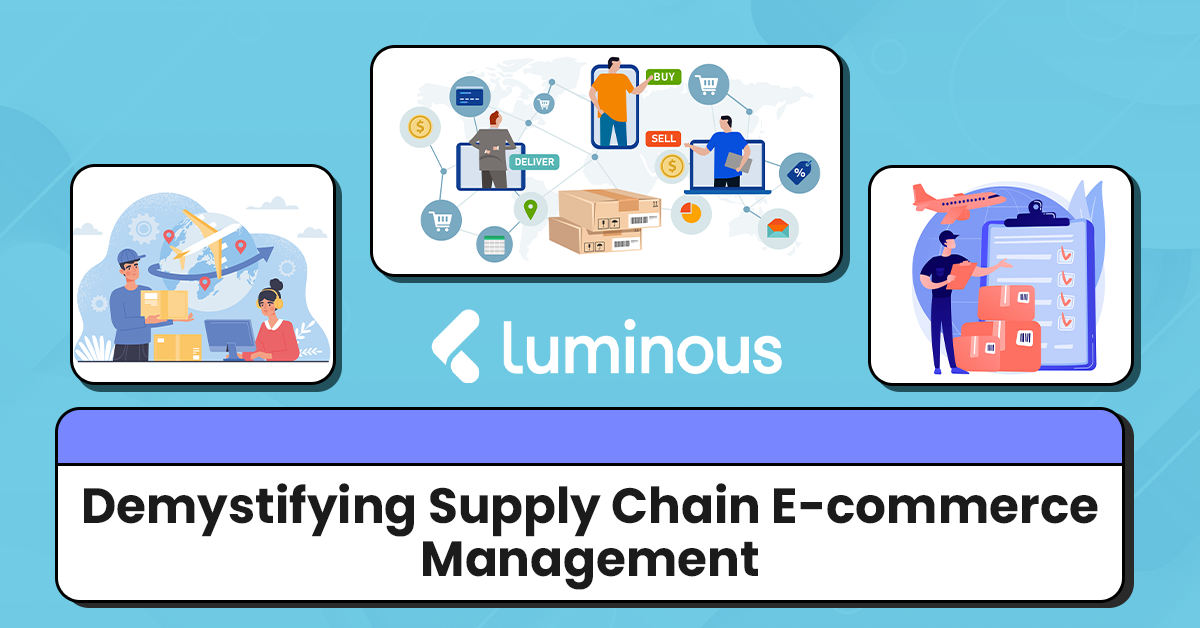The Perils of Overstocked Items Inventory management is a crucial aspect of running a successful business. While it is essential ...
In this article:
Every eCommerce business wants to grow and make more sales. Efficient supply chain management can make this happen seamlessly.
The e-commerce supply chain comprises different moving components that must work synchronously to fulfill and deliver consumer orders promptly.
However, creating a strategic (and efficient) supply chain needs a thorough comprehension of the distinct steps and important metrics that define and track this procedure from beginning to end.
This article will take a closer look at what is involved in running a modern eCommerce supply chain.
Let’s start by defining eCommerce supply chain management.
Ecommerce Supply Chain Management- what is it?
E-commerce supply chain management covers coordinating the flow of information, resources, and finances among the many stages of the eCommerce supply chain, from raw material supply to final product delivery to the buyer.
Suppliers, producers, vendors, warehouses, logistics, transportation businesses, distribution and fulfillment centers, and, in the end, the buyer is all part of the supply chain.
Each piece manages a specific link in the supply chain and contributes to meeting customer expectations and, ultimately, the overall success or lack of it of the business.
But how does the e-commerce supply chain work? Let's find out.
How it works.
At the heart of the supply chain is the consumer. They are an essential piece of the chain. Here is a summary of what happens in e-commerce supply chain management:
-
Raw materials flow from supplier to manufacturer
-
The manufacturer makes finished products from raw materials
-
The product is transported to the warehouse, fulfillment centers, and the end consumer when he orders.
-
Money flows from the customer to the supplier.
The good news is that improving and effectively managing the different processes is now easier. Business owners can use robust platforms like ERP software such as Luminous and AI to increase efficiency.
Next, let's see the stages in eCommerce supply chain management because each step of the eCommerce supply chain is critical to running a successful eCommerce business.
The stages in eCommerce supply chain management
Supply and Demand Planning
The planning of supply and demand is the initial stage in the supply chain management of any eCommerce organization.
At this phase, you must conduct thorough market and product research to determine the demand for your product. Research is critical because it determines your order size, expenses, warehouse capacity, etc.
One of the pitfalls of failing to forecast your demand adequately is not being able to sell the complete stock you've ordered, leaving you with dead inventory that you can't move.
Sourcing and Development of product
When it comes to the eCommerce supply chain, retailers will either private label a product or obtain a ready product from suppliers (factories or trading companies).
At this time, collaborating with a sourcing firm can be of added advantage to the business.
You must compare several vendors, their prices, quality standards, etc., and choose the best one to work with.
Management of Inventory and Warehouses
If you manage an eCommerce business, one of your most fundamental responsibilities is to ensure that you have the proper inventory in the correct numbers. Because your inventory is constantly changing due to client requests and incoming replenishment, it's critical to know which products are available at any time.
Inventory tracking is a strategy for tracking (or monitoring) your inventory levels along the supply chain to satisfy consumer demand quickly, avoid overselling and eliminate excess inventory items.
Learn how Qualtry solved their inventory problem with Luminous here
Order management/Processing and Delivery
Order management or processing includes order entry, product packaging, order fulfillment, distribution, and shipping.
It encompasses nearly every stage of your supply chain, from the consumer placing an order through the finished delivery.
Fortunately, this is where you can largely automate order processing to make it faster and easier. For example, you may combine your store listings and inventory storage system to enable automatic order routing to fulfillment facilities.
Handling Returns
The last stage of the eCommerce supply chain is handling returns, also known as reverse logistics. It means the usual flow of raw materials and finished goods throughout the supply chain is reversed, moving items from the customers back to the seller. This stage will involve processing consumer returns and returning defective and expired products from your warehouse to your supplier.
Key metrics to watch closely in eCommerce supply chain management.
Do you know the most valuable metrics to track for your eCommerce business? Are you actively tracking these key metrics and analytics?
The truth is trying to understand how well your supply chain is performing without actively tracking key metrics is flying in the dark without a light or GPS to guide you.
The critical metrics for your business can be divided into;
Diagnostics metrics
are used to examine supply chain issues and 'diagnose' the root cause. They track supply chain events to determine why something happened and where you can improve.
Data mining and discovery are used to implement diagnostic metrics.
Predictive metrics
Aid in forecasting what is likely to happen in your supply chain in the future. They feed historical data into a machine-learning model to assess significant trends and purchasing habits.
This data is compared to current inventory data to help predict what will happen next, such as how a new marketing campaign or a product redesign will affect sales.
Prescriptive metrics
Suggest specific measures your company can take to influence its predictive outcomes. Once you have a sense of what may happen in your supply chain in the future, prescriptive metrics can help you traverse these occurrences with ease. If you anticipate a rise in sales, these metrics ensure that you have enough inventory to satisfy demand.
These metrics will give you a sense of direction as you ‘fly’ to optimize your eCommerce supply chain.
Want to know how you can design an effective eCommerce chain after getting these metrics?
Let’s see how.
Actionable tips on designing an effective eCommerce supply chain.
Are you currently thinking how best to design or redesign your eCommerce supply chain?
Here are a few things you can do to ramp up your operations.
Examine Your Current Supply Chain
You must evaluate your present supply chain to identify inefficiencies. Examine the whole supply chain, from product sourcing to locating raw materials to last-mile delivery to end users.
Remember that the purpose here is to identify and address delays, inefficient workflows, wasteful expenses, or other operations.
A report by AdAge says that after one to three supply chain delays or disruptions, 58% of consumers would quit buying from a brand entirely.
Can you see why examining your supply chain is crucial to the growth of your business?
Decrease order processing time with technology.
Numerous tools for innovative warehouse management available today can help you enhance order fulfillment and speed up order processing.
For example, RFID tags and barcode scanners are to swiftly enter your SKUs and track inventory as it moves through the supply chain.
The next-generation intelligent warehouse platforms like Luminous can scan and automatically reorder or notify the supply department when stock levels fall below a certain threshold.
Streamline Your Warehouse Processes and bring your stock closer to your customer.
Begin by planning the layout of your warehouse space to make the most of the available space. Consider adopting barcode scanners, warehouse management systems, and other tools and technologies to speed up and streamline all warehouse procedures.
Choose suitable packaging, keeping it to a bare minimum. Doing this lets you save warehousing and transportation costs while being more environmentally friendly.
Storing stock in strategic locations throughout several distribution centers close to the customers is intelligent as it dramatically shortens delivery time, helping to improve customer experience.
Do market research to continually stay on top of product demand.
Successful eCommerce firms conduct ongoing market research to keep up with trends and product demand. Keeping track of a product's lifetime is critical for forecasting sales and maintaining an optimal stock level.
Collaborate with a third-party logistics provider.
If your store lacks the funding or capacity to maintain its fulfillment center, partnering with a third-party logistics (3PL) company may be helpful.
While this method may not be suitable for every company, certain eCommerce businesses can benefit significantly from collaborating with a 3PL.
Entering into this type of connection allows you to control all the moving pieces of your supply chain while connecting your company to a broad network of fulfillment locations.
How to enhance your eCommerce supply chain management by leveraging Luminous
Designed by a team of former operations managers for eCommerce companies who know the inside and out of the eCommerce world, Luminous is your one-stop solution to creating a successful eCommerce supply chain.
Here is what you can do with Luminous.
Make confident data-driven decisions.
Luminous provides an omnichannel view of all your eCommerce operations, providing you with a bird’s eye view of your inventory levels to make more efficient data-driven decisions for your eCommerce supply chain.
Improve efficiency by automating eCommerce supply chain processes.
Luminous' inventory management system includes automation to boost efficiency, reduce expenses, and improve business intelligence.
You can quickly increase the productivity of your supply chain functions by automating order management rather than relying on error-prone manual methods.
With Luminous, tracking order status, counting inventory, and sourcing real-time inventory data is as simple as automating the process!
Assured of continued support.
Our team’s goal is to help your eCommerce business thrive and grow. We are dedicated to finding solutions for all your supply chain problems.
What more can you ask for? Book a demo with us to experience it for yourself.
Ready to get started?
See how Luminous can transform the way you manage ecommerce.
Keep Learning


Efficiency in order fulfillment is a critical component of any successful e-commerce business. One of the key strategies to ...
Luminous Team
April 17, 2024

In the fast-paced world of warehousing and logistics, staying on top of your pick and pack operations is crucial for success. To ...
Luminous Team
April 17, 2024
Stay up-to-date on the latest.
Subscribe for updates from Luminous—fresh insight delivered to your inbox twice a month.
